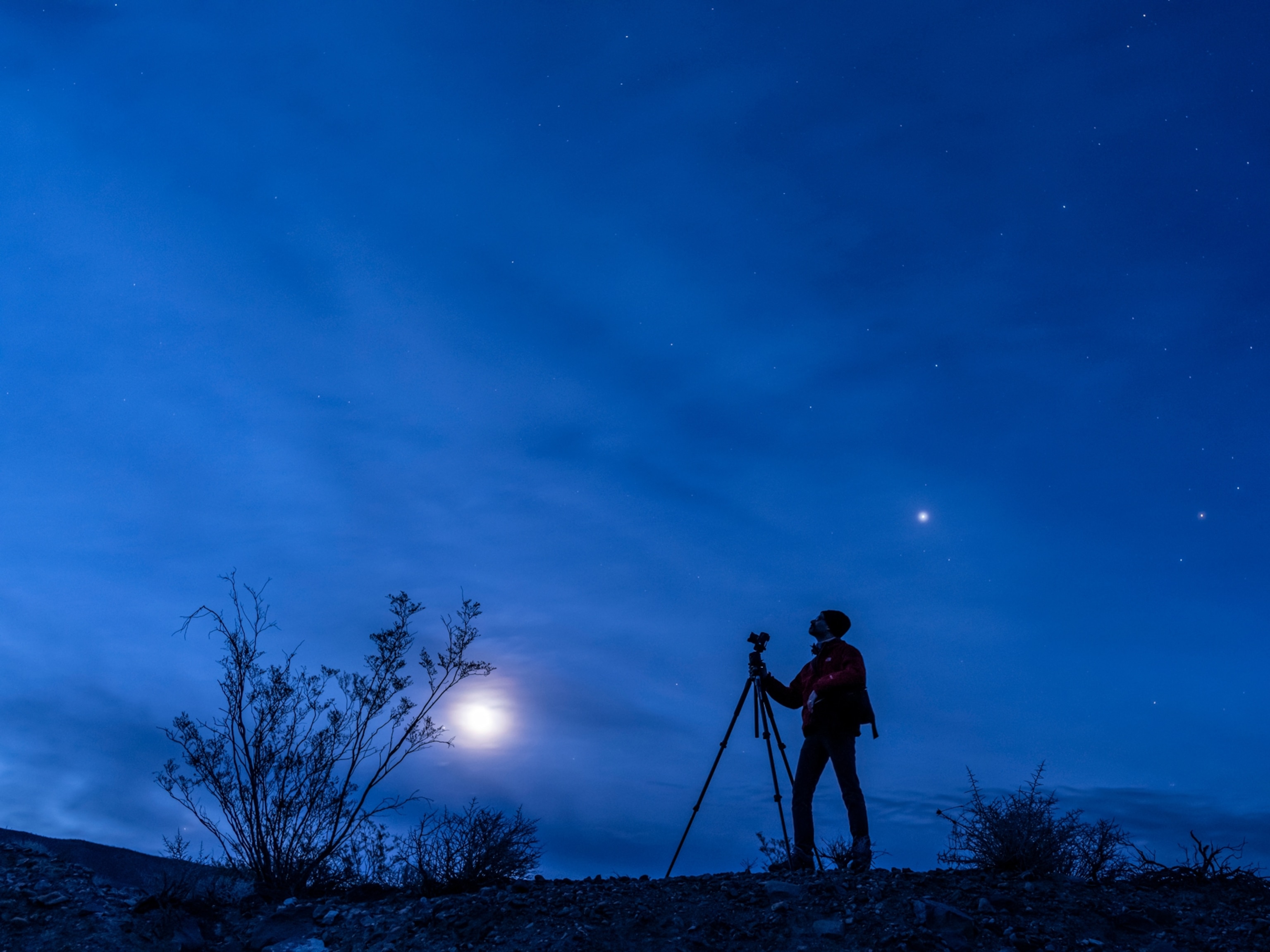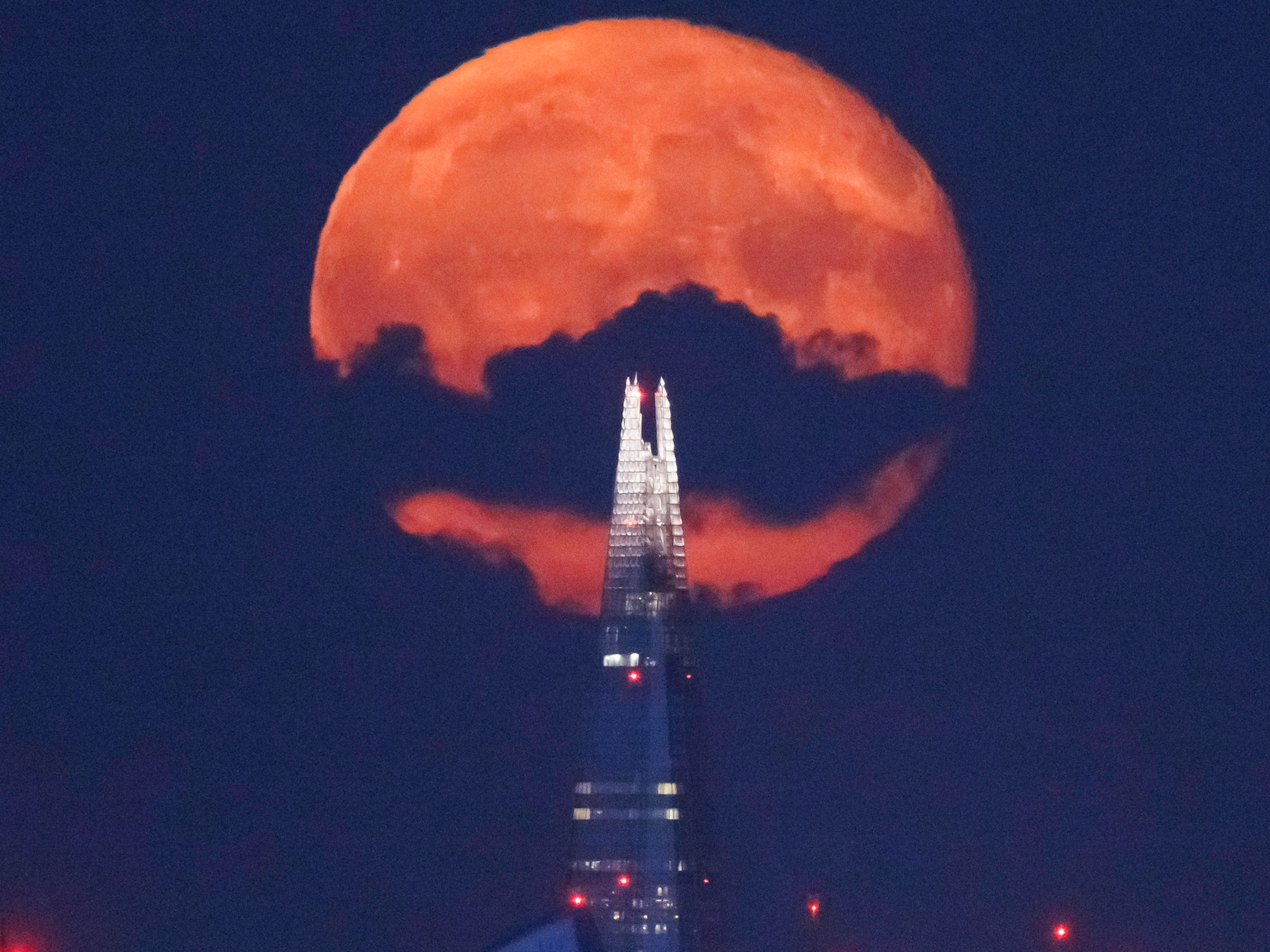
Creepy Full Honey Moon Fills Sky This Friday the 13th
Stunning honey-colored full moon lights up night sky to delight sky-watchers.
The superstitious may want to steer clear of black cats this Friday the 13th, but venturing outside very early in the morning will be worthwhile—you'll be able to catch the spectacular full "honey moon" in the night sky.
The honey moon officially reaches its full moon phase at 12:13 a.m. EDT on Friday morning for eastern North America. But its honey hues will shine most brightly in the early evening.
With the sun's path across the sky at its highest during this month of the summer solstice, the moon is at its lowest, which keeps the lunar orb close to the horizon and makes it appear more amber than other full moons this year.
The amber colors are due to the scattering of longer wavelengths of light by dust and pollution in our atmosphere. "It is a similar phenomenon as seen at sunset, when sunlight is scattered towards the red end of the spectrum, making the sun's disk appear orange-red to the naked-eye," says astronomer Raminder Singh Samra of the H. R. MacMillan Space Centre in Vancouver, Canada.
The most spectacular part of the so-called honey moon begins hours before midnight, due to an illusion by which the moon appears larger to sky-watchers when it's near the horizon than when it hangs high in the sky.
Researchers aren't quite sure what causes this optical illusion of a larger moon near the horizon, but they suspect it has something to do with the human mind trying to make sense of the moon's proximity to more familiar objects like mountains, trees and houses in the foreground.
The Moon at Its Closest
The monthly full moon always looks like a big disk, but because its orbit around the Earth is egg-shaped, there are times in the lunar cycle when the moon is at its shortest distance from Earth (called perigee), some 224,976 miles (362,065 kilometers) away.
This month the perigee just happens to coincide with the full phase, which may make it appear unusually large to some keen-eyed sky-watchers.
"The moon illusion should be more prominent during this full moon as it will graze closer to the horizon than at any other time of the year," Samra says. "This will make the moon appear more amber than other full moons of the year.
A full moon coinciding on Friday the 13th is not all that uncommon, occurring every three or so years.
But having the combination of a honey moon and Friday the 13th is rare, last occurring on June 13, 1919, according to the popular astronomy site Universe Today. We'll have to wait until June 13, 2098, for the next one.
Marital Traditions?
Astronomer Bob Berman says that the honey-hued moon, which always occurs in June around the summer solstice, may have given us the modern term "honeymoon," with weddings traditionally held in June in some cultures.
"That phrase dates back nearly half a millennium, to 1552, but one thing has changed: Weddings have shifted and are now most often held in August or September," said Berman, who works with the astronomy group Slooh, in a statement.
"The idea back then was that a marriage is like the phases of the moon, with the full moon being analogous to a wedding," Berman said. "Meaning, it's the happiest and 'brightest' time in a relationship."
Armchair astronomers can catch the sky show virtually through a live high-definition webcast of the honey moon by the Slooh telescopes in the Canary Islands, off the coast of Africa. The online show starts on Thursday, June 12, at 9:30 p.m. EDT (link for international times).
Follow Andrew Fazekas, the Night Sky Guy, on Twitter, Facebook, and his website.






